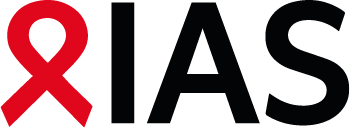Share Abstract
Once-daily dolutegravir (DTG; S/GSK1349572) has a renal safety profile comparable to raltegravir (RAL) and efavirenz in antiretroviral (ART)‑naïve adults: 48 week results from SPRING-2 (ING113086) and SINGLE (ING114467)
Abstract Content:
Background: DTG once-daily (QD) showed favorable efficacy/tolerability in ART-naïve studies versus RAL BID (SPRING-2) and as a regimen with abacavir/lamivudine (ABC/3TC) QD versus Atripla (TDF/FTC/EFV) QD (SINGLE). DTG inhibits creatinine secretion; small, non-progressive increases in creatinine were observed in Phase 2. DTG does not affect glomerular filtration rate (GFR) or effective renal plasma flow as assessed by iohexol and para-aminohippurate probes, respectively.
Methods: SPRING-2 and SINGLE were Phase III, multicenter, randomized, double-dummy-blinded, non-inferiority trials in HIV-1-infected ART-naive adults. SPRING-2 subjects received DTG 50 mg QD (n=411) or RAL 400 mg BID (n=411), with investigator-selected backbone NRTIs (TDF/FTC [n=242, 247] or ABC/3TC [n=169, 164]). SINGLE subjects received DTG 50 mg + ABC/3TC QD (n=414) or TDF/FTC/EFV QD (n=419). Renal safety was assessed by serial measurements of serum creatinine, estimated GFR (creatinine clearance, Cockcroft-Gault), spot urine albumin/creatinine ratio, and renal adverse events (AEs; MedDRA renal disorders system organ class, excluding infections).
Results: Baseline characteristics were similar in DTG and comparator groups. Few subjects experienced a renal AE in either study (SPRING-2: 4% DTG, 3% RAL; SINGLE: 4% DTG, 5% Atripla) and no subjects in SPRING-2 withdrew due to renal AEs. In SINGLE, one subject in the DTG/ABC/3TC arm and two subjects in the TDF/FTC/EFV arm withdrew due to renal adverse events. Small, non-progressive increases in mean serum creatinine were observed by Week2 and remained stable to Week 48 in the DTG arms: for DTG versus RAL at Week 4, mean (SD) change from baseline (CFB) +11.73 (8.04) versus +3.63 (7.57) µmol/L, and at Week 48, +12.34 (9.00) versus +4.66 (8.12). In SPRING-2, CFB was also similar by NRTI backbone. For DTG/ABC/3TC versus TDF/FTC/EFV, Week 4 CFB was +11.06 (7.64) versus +0.21 (8.98), and at Week 48, +10.18 (9.02) versus -0.70 (8.34). Corresponding changes in estimated GFR were observed. No increases in median urinary albumin/creatinine ratios occurred in any group through Week 48.
Conclusion: The DTG regimen renal safety profile was similar to comparators. DTG's effect on estimated GFR using creatinine clearance appears to be artifactual and does not result in renal toxicity through 48 Weeks in adult ART-naïve subjects.
Methods: SPRING-2 and SINGLE were Phase III, multicenter, randomized, double-dummy-blinded, non-inferiority trials in HIV-1-infected ART-naive adults. SPRING-2 subjects received DTG 50 mg QD (n=411) or RAL 400 mg BID (n=411), with investigator-selected backbone NRTIs (TDF/FTC [n=242, 247] or ABC/3TC [n=169, 164]). SINGLE subjects received DTG 50 mg + ABC/3TC QD (n=414) or TDF/FTC/EFV QD (n=419). Renal safety was assessed by serial measurements of serum creatinine, estimated GFR (creatinine clearance, Cockcroft-Gault), spot urine albumin/creatinine ratio, and renal adverse events (AEs; MedDRA renal disorders system organ class, excluding infections).
Results: Baseline characteristics were similar in DTG and comparator groups. Few subjects experienced a renal AE in either study (SPRING-2: 4% DTG, 3% RAL; SINGLE: 4% DTG, 5% Atripla) and no subjects in SPRING-2 withdrew due to renal AEs. In SINGLE, one subject in the DTG/ABC/3TC arm and two subjects in the TDF/FTC/EFV arm withdrew due to renal adverse events. Small, non-progressive increases in mean serum creatinine were observed by Week2 and remained stable to Week 48 in the DTG arms: for DTG versus RAL at Week 4, mean (SD) change from baseline (CFB) +11.73 (8.04) versus +3.63 (7.57) µmol/L, and at Week 48, +12.34 (9.00) versus +4.66 (8.12). In SPRING-2, CFB was also similar by NRTI backbone. For DTG/ABC/3TC versus TDF/FTC/EFV, Week 4 CFB was +11.06 (7.64) versus +0.21 (8.98), and at Week 48, +10.18 (9.02) versus -0.70 (8.34). Corresponding changes in estimated GFR were observed. No increases in median urinary albumin/creatinine ratios occurred in any group through Week 48.
Conclusion: The DTG regimen renal safety profile was similar to comparators. DTG's effect on estimated GFR using creatinine clearance appears to be artifactual and does not result in renal toxicity through 48 Weeks in adult ART-naïve subjects.
